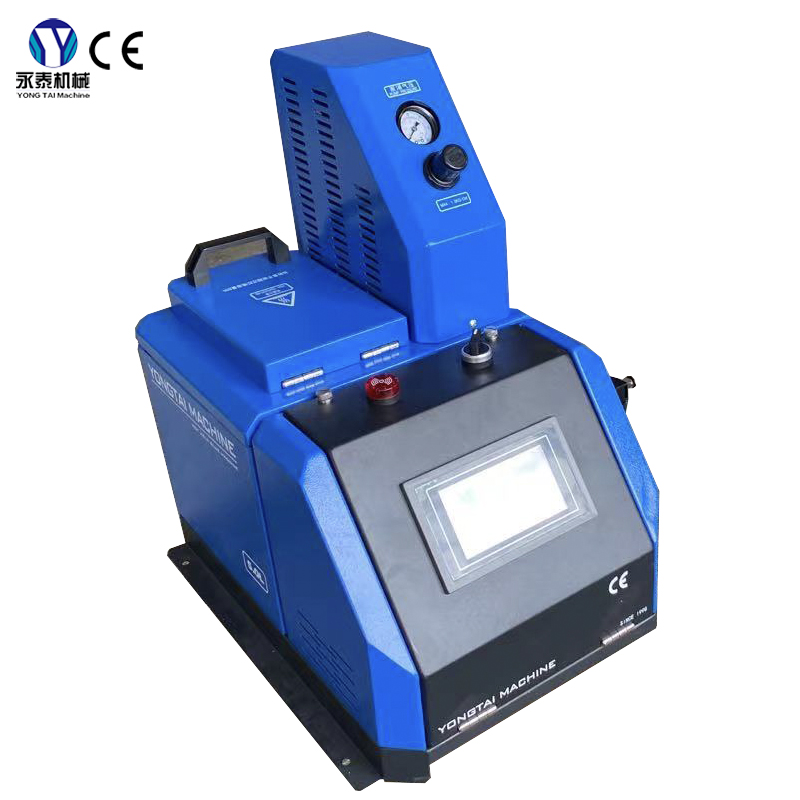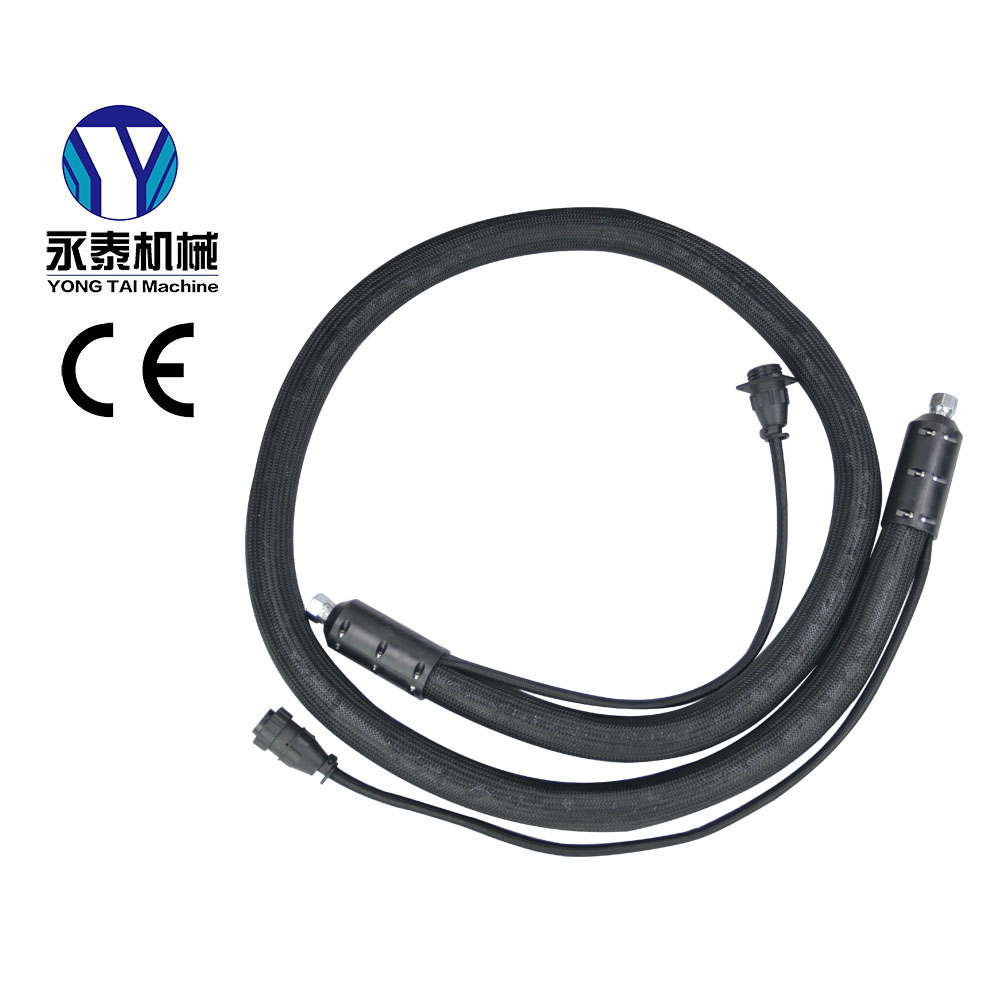April 15, 2025
As an efficient and convenient bonding equipment, hot melt adhesive machine is widely used in packaging, textile, automobile manufacturing and other fields. However, in actual use, hot melt adhesive machine often encounters a thorny problem - carbonization. The generation of carbonization not only affects the normal operation of the equipment, but may also lead to product quality degradation or even equipment damage. Therefore, understanding how to effectively prevent carbonization, the impact of carbonization on use, and the correct treatment method after carbonization is crucial to ensure the stability of the hot melt adhesive machine and extend its service life.
Carbonization is mainly caused by the following factors:
· Too high temperature: Hot melt adhesive needs to melt at a certain temperature, but if the temperature is set too high or the equipment is in a high temperature state for a long time, it will cause the colloid to decompose.
· Too long residence time: The hot melt adhesive stays in the heating system for too long and fails to be discharged in time, which is prone to oxidation and decomposition.
· Air ingress: If the equipment is not well sealed, oxygen in the air enters the adhesive tank or pipe, which will accelerate the oxidation reaction of the colloid.
· Material problem: Some types of hot melt adhesives are sensitive to high temperatures and are more prone to carbonization.
· Equipment aging: Hot melt adhesive machines that have been used for a long time may have problems such as aging of heating elements and failure of temperature control systems, which may lead to abnormal temperature increases.
In order to reduce the occurrence of carbonization of hot melt adhesive machines, the following are some practical preventive measures:
1. Reasonable temperature control
· Set the appropriate heating temperature according to the type of hot melt adhesive used. It is generally recommended to control the temperature at the lower limit of the recommended range to reduce the risk of colloid decomposition.
· Regularly check whether the temperature control system is accurate to avoid abnormal temperature rise due to equipment failure.
2. Shorten the residence time of colloid
· During the production process, minimize the residence time of hot melt adhesive in the heating system. The production process can be optimized to speed up the flow rate of colloid and reduce the time the colloid is exposed to high temperature.
· If the equipment is out of use for a long time, the residual colloid in the glue tank and pipeline should be cleaned in time to avoid carbonization due to long-term standing.
3. Maintain the tightness of the equipment
· Ensure that the hot melt adhesive machine's adhesive tank, pipes, nozzles and other parts are well sealed to prevent air from entering and contacting the adhesive.
· For open-design equipment, consider installing a dust cover or using an inert gas (such as nitrogen) for protection to reduce the occurrence of oxidation reactions.
4. Regularly maintain the equipment
· Regularly check the heating elements, temperature control system and pipe connections of the hot melt adhesive machine to ensure that the equipment is operating normally.
· When cleaning the adhesive tank and pipes, the residual colloid should be thoroughly removed to avoid excessive accumulation and carbonization.
5. Choose high-quality hot melt adhesive
· Different types of hot melt adhesives have different tolerance to high temperatures. It is recommended to choose products with good stability and anti-aging properties.
· When changing the brand or model of hot melt adhesive, be sure to test it first to ensure that it is compatible with the existing equipment.
6. Pay attention to the frequency of adding glue
·During the production process, hot melt glue should be added in an appropriate amount according to actual needs to avoid adding too much glue at one time, which will cause some glue to be carbonized due to long-term non-use.
Once carbonization is found in the hot melt adhesive machine, the following steps should be taken in time to deal with it:
1. Stop the equipment immediately
·When carbonization is detected, the hot melt adhesive machine should be turned off immediately and the heating operation should be stopped to prevent further carbonization.
·Cut off the power supply and wait for the equipment to cool down completely before proceeding with the subsequent operation
2. Clean carbides
· Use special tools or chemical cleaning agents to remove carbides on the adhesive tank, pipes and nozzles.
Common cleaning methods include:
o Mechanical cleaning: Use scrapers, brushes and other tools to manually remove carbides, which is suitable for mild carbonization. o Chemical cleaning: Select a cleaning agent suitable for hot melt adhesive materials (such as professional adhesive remover), inject it into the equipment and soak it for a period of time, and rinse it with clean water after the carbides soften.
o High temperature burning: For stubborn carbides, high temperature burning can be used for cleaning, but it is necessary to control the temperature to avoid damaging equipment components.
3. Check the equipment condition
· After cleaning, carefully check whether there is wear or damage to the glue tank, pipes and nozzles. If necessary, replace damaged parts in time to ensure the normal operation of the equipment.
· Check the performance of the heating elements and temperature control system to ensure that they are working properly.
4. Recalibrate the temperature setting
· Before restarting the equipment, recalibrate the temperature setting to ensure that it meets the requirements for the use of hot melt adhesive.
· Perform a trial run to observe whether the equipment is operating normally and whether the glue flows out evenly.
5. Strengthen daily maintenance
· Analyze the causes of carbonization problems that have occurred and formulate improvement measures to avoid similar situations from happening again.
· Strengthen the daily maintenance of equipment, clean the rubber tank and pipelines regularly, and ensure that the equipment is always in good condition.


